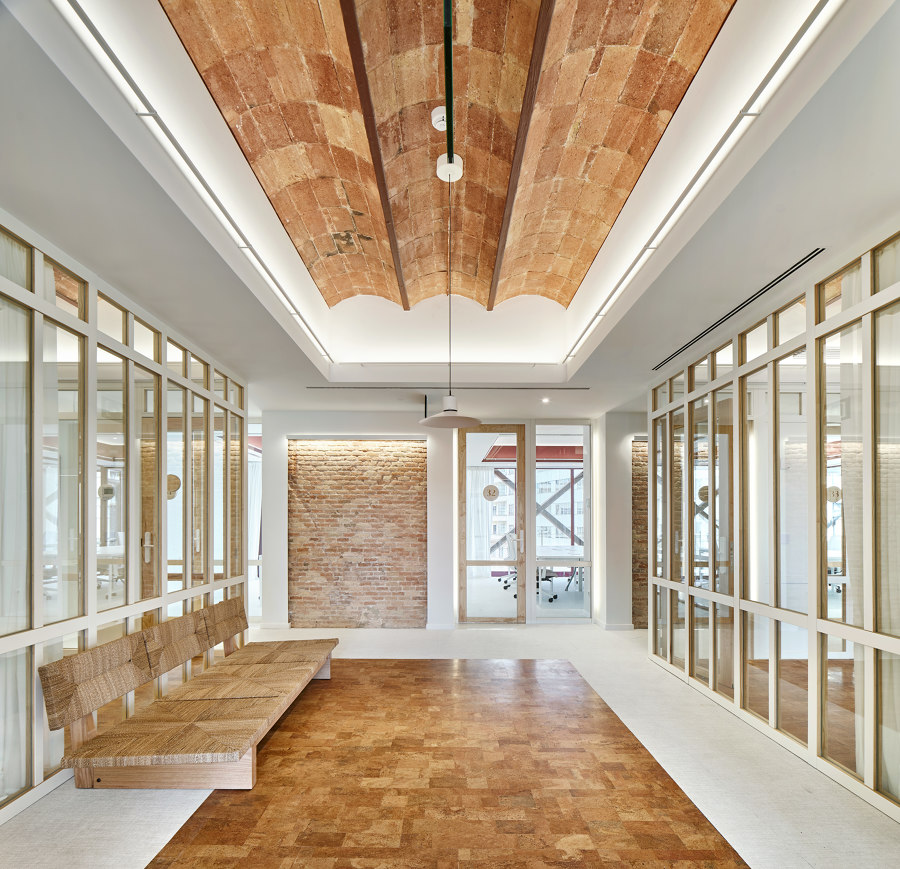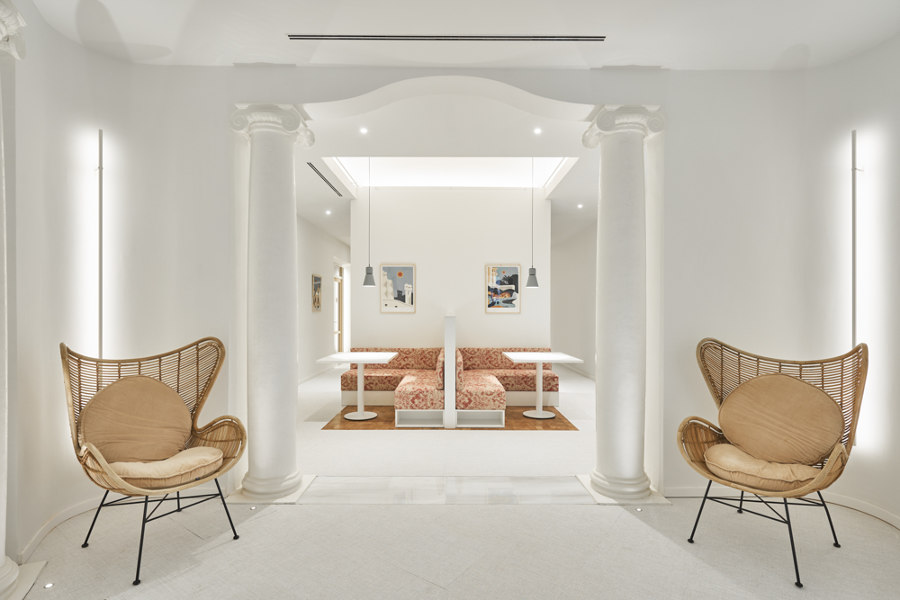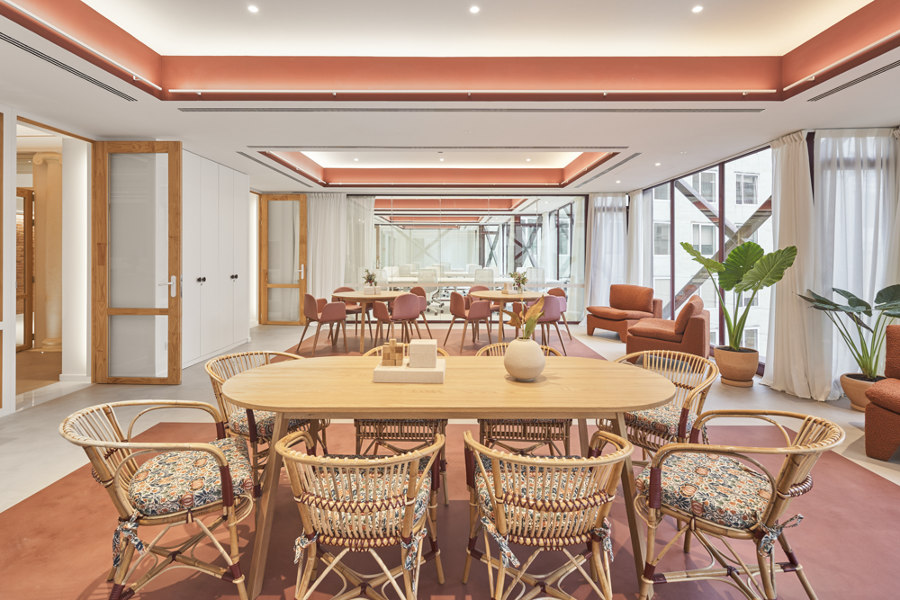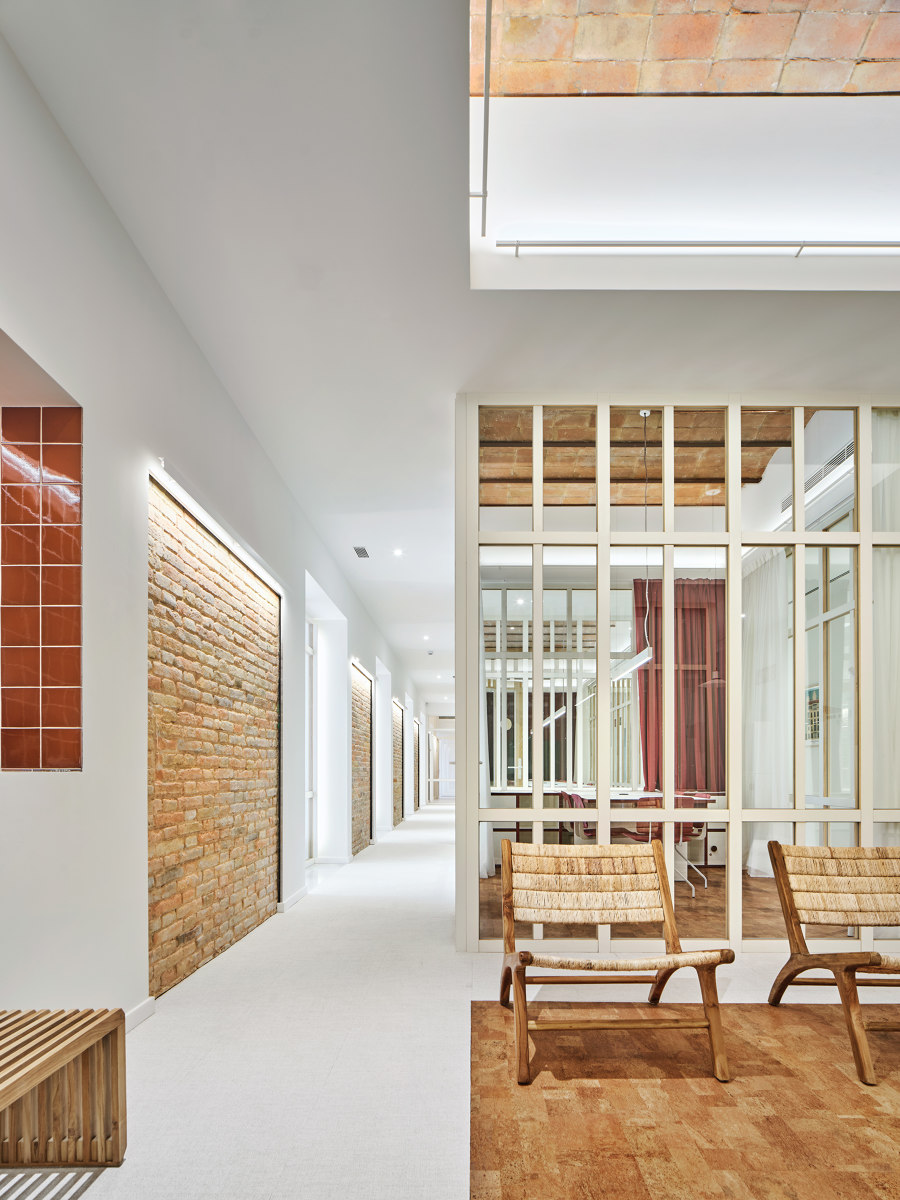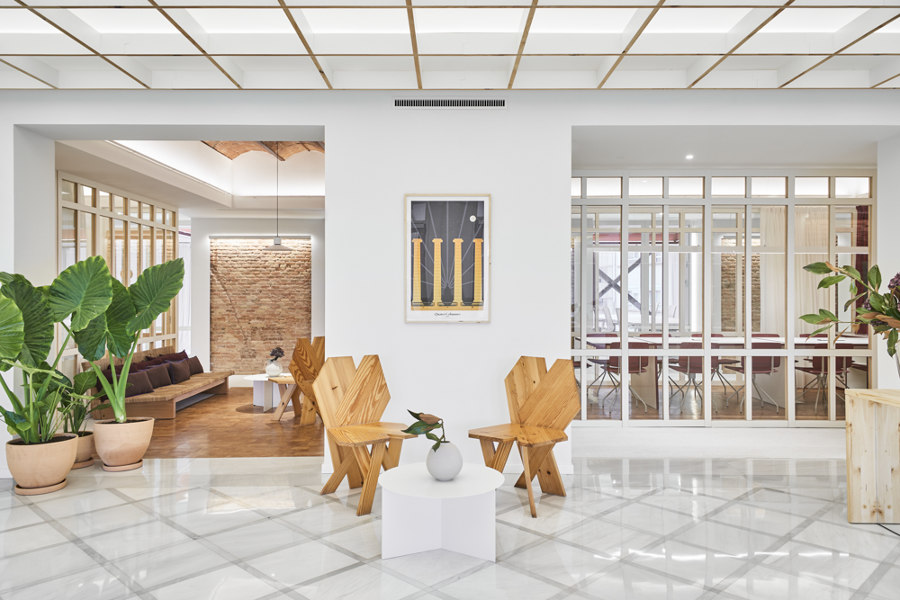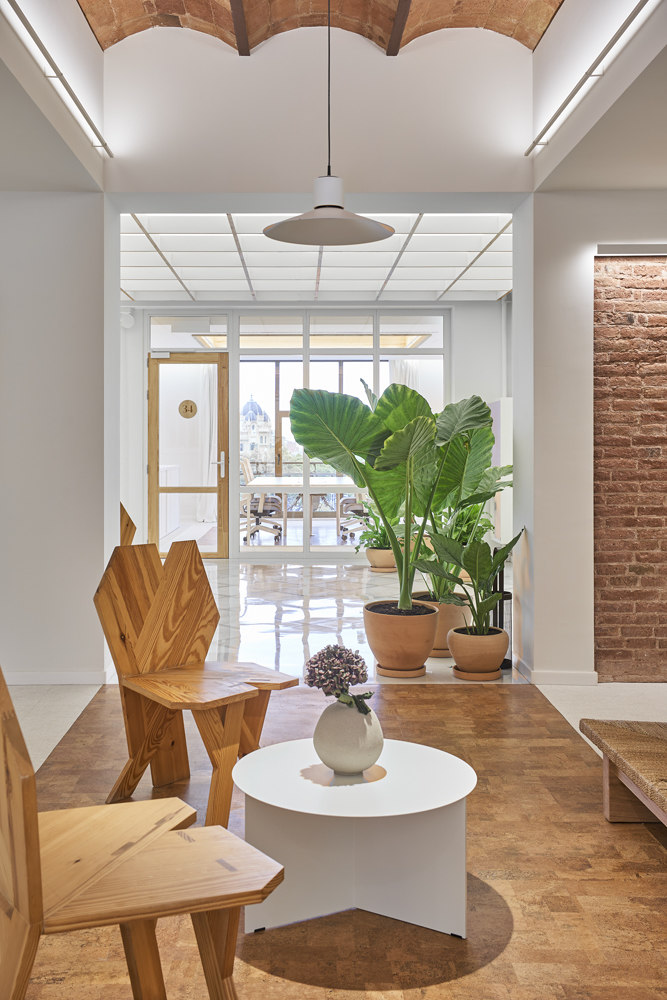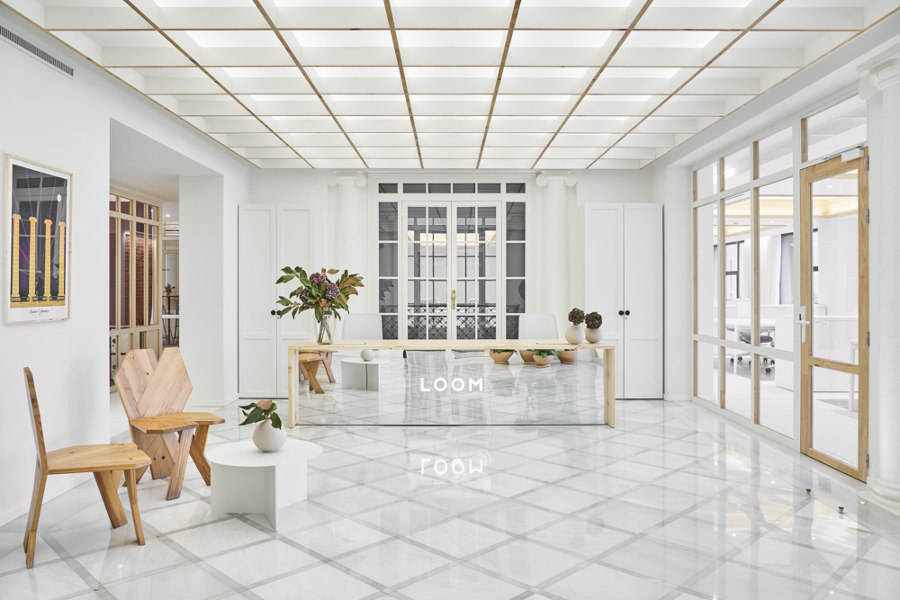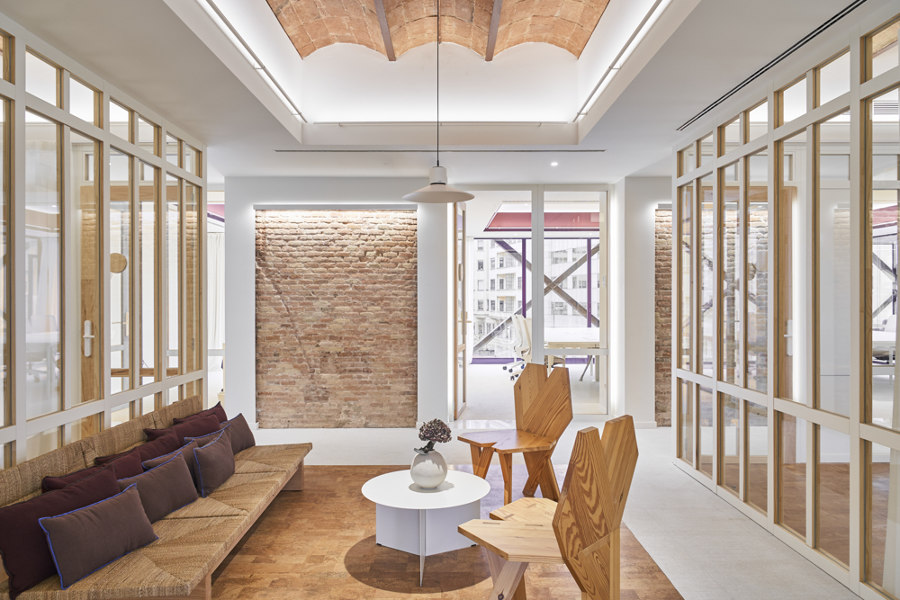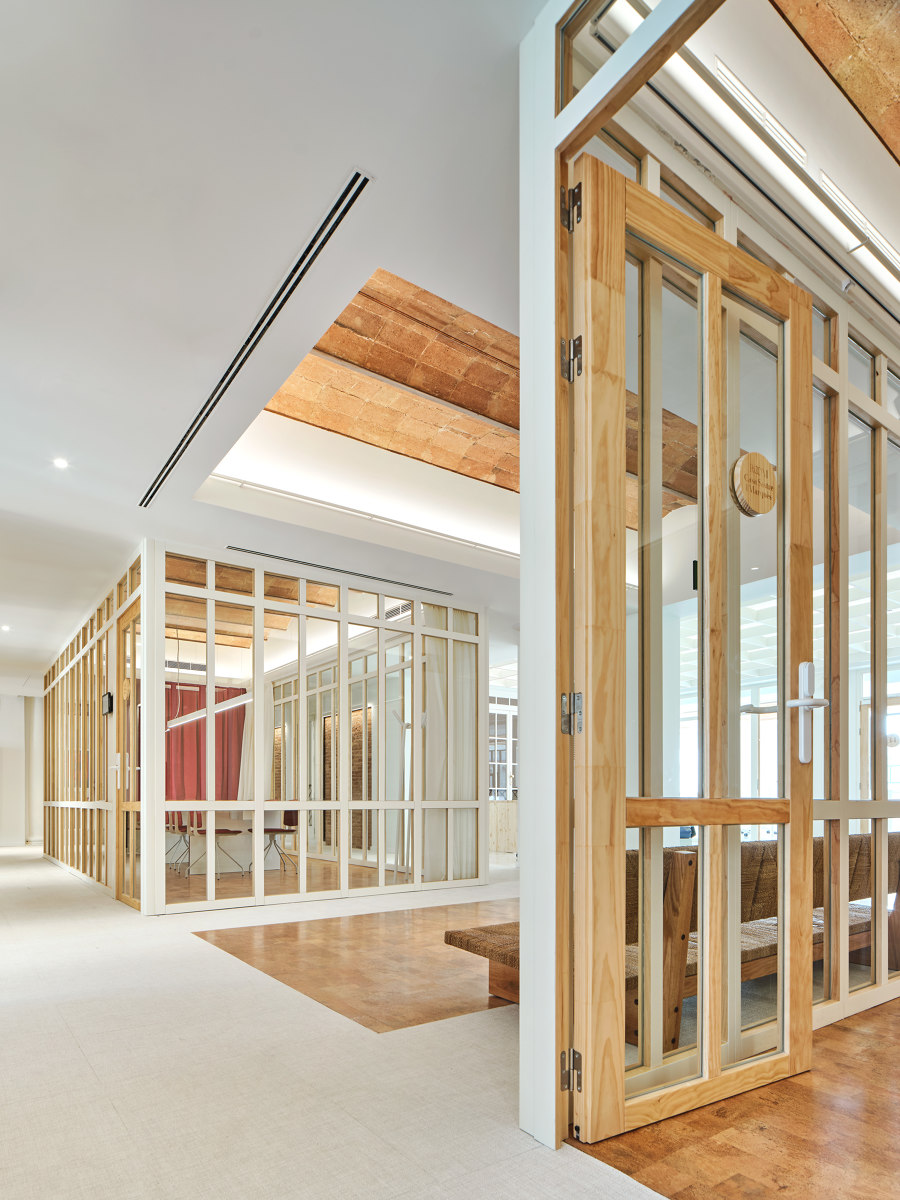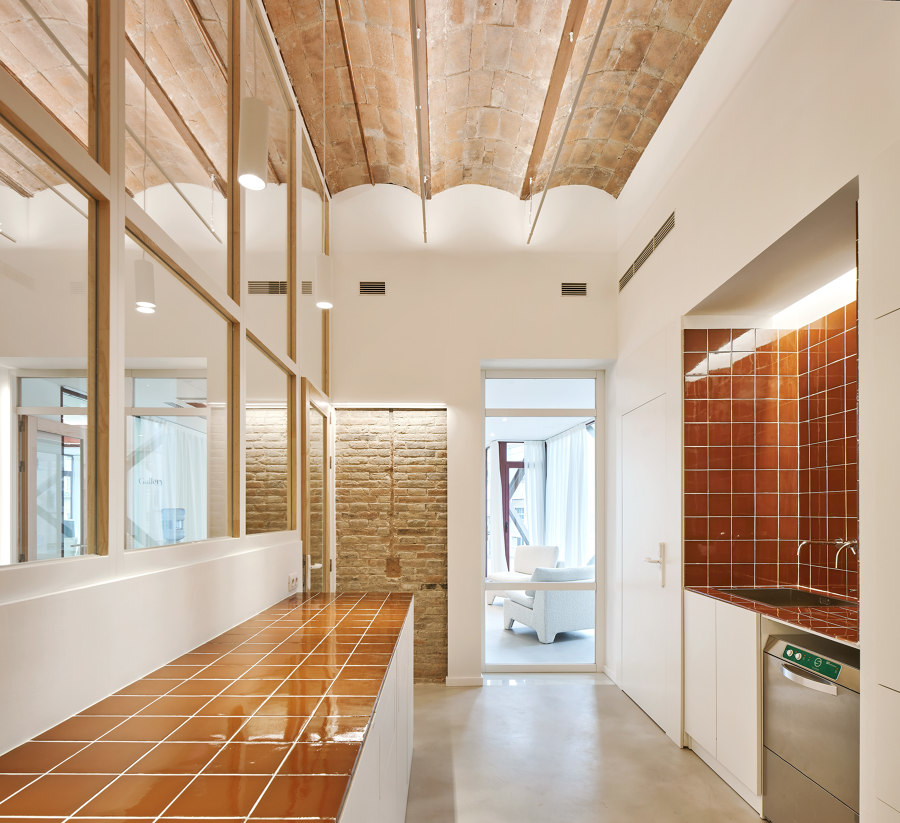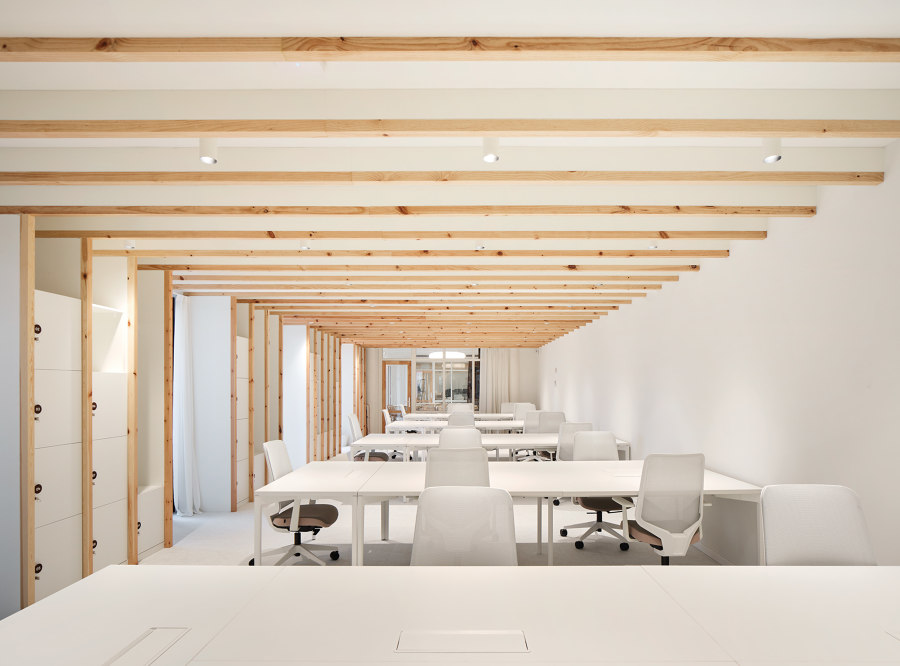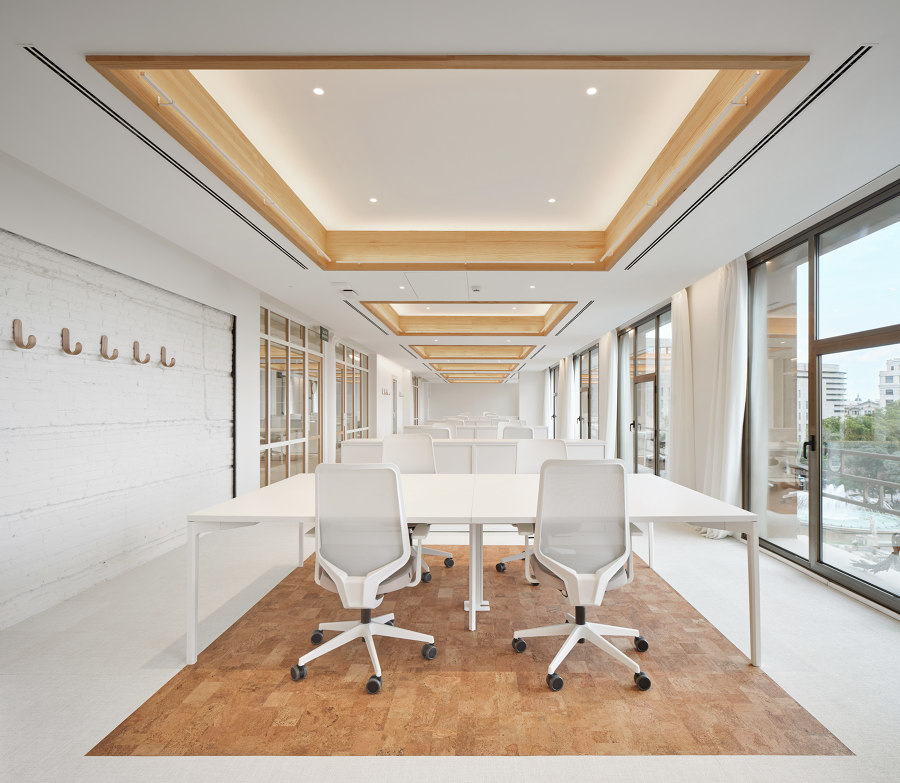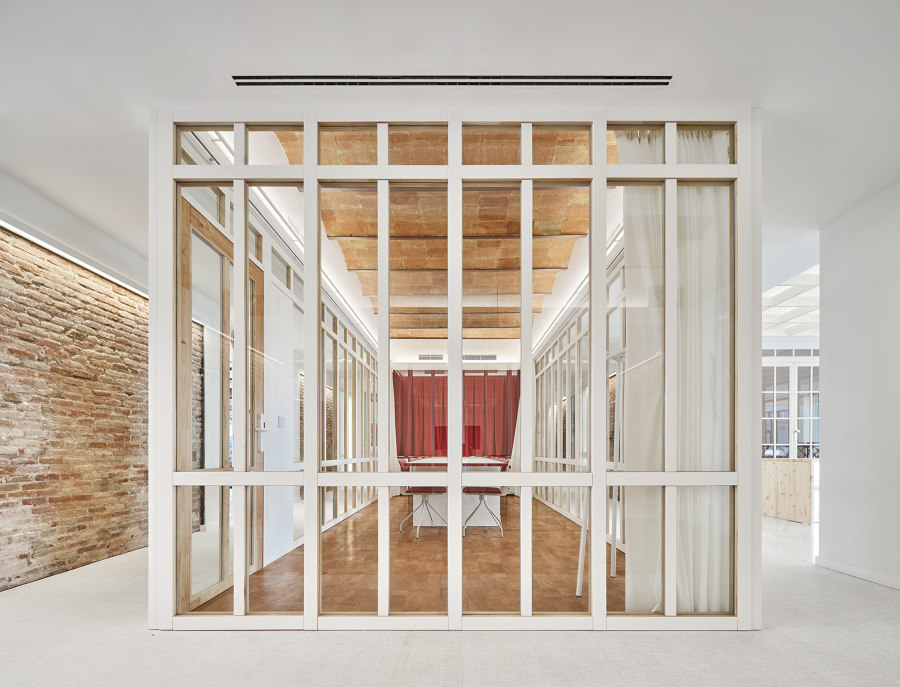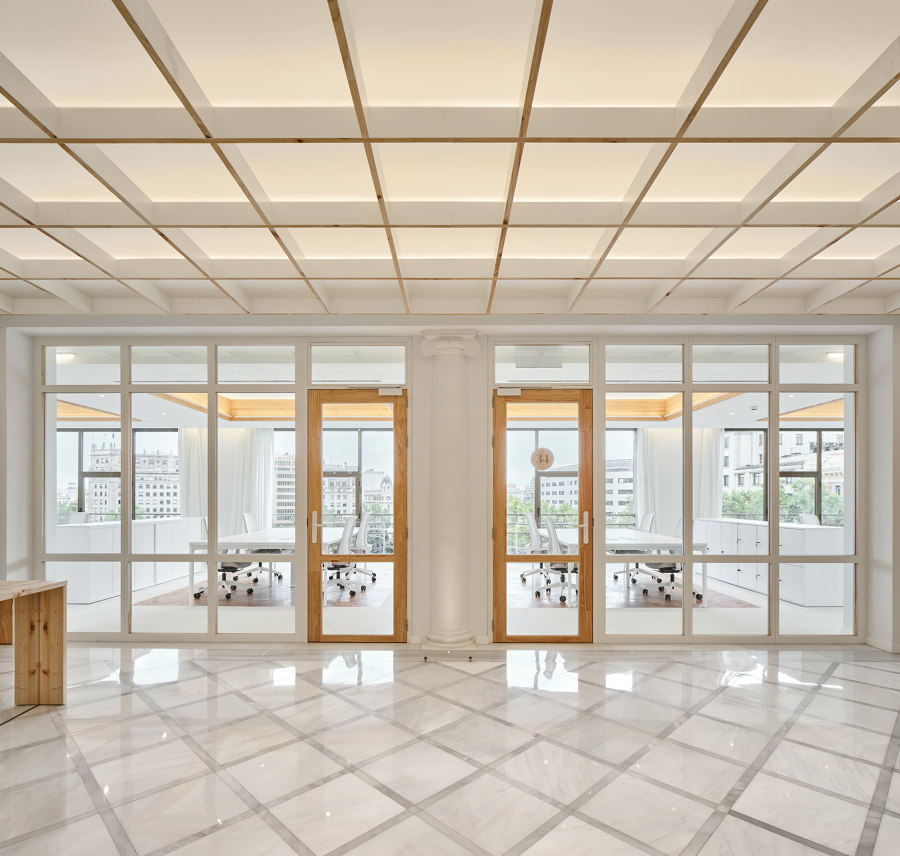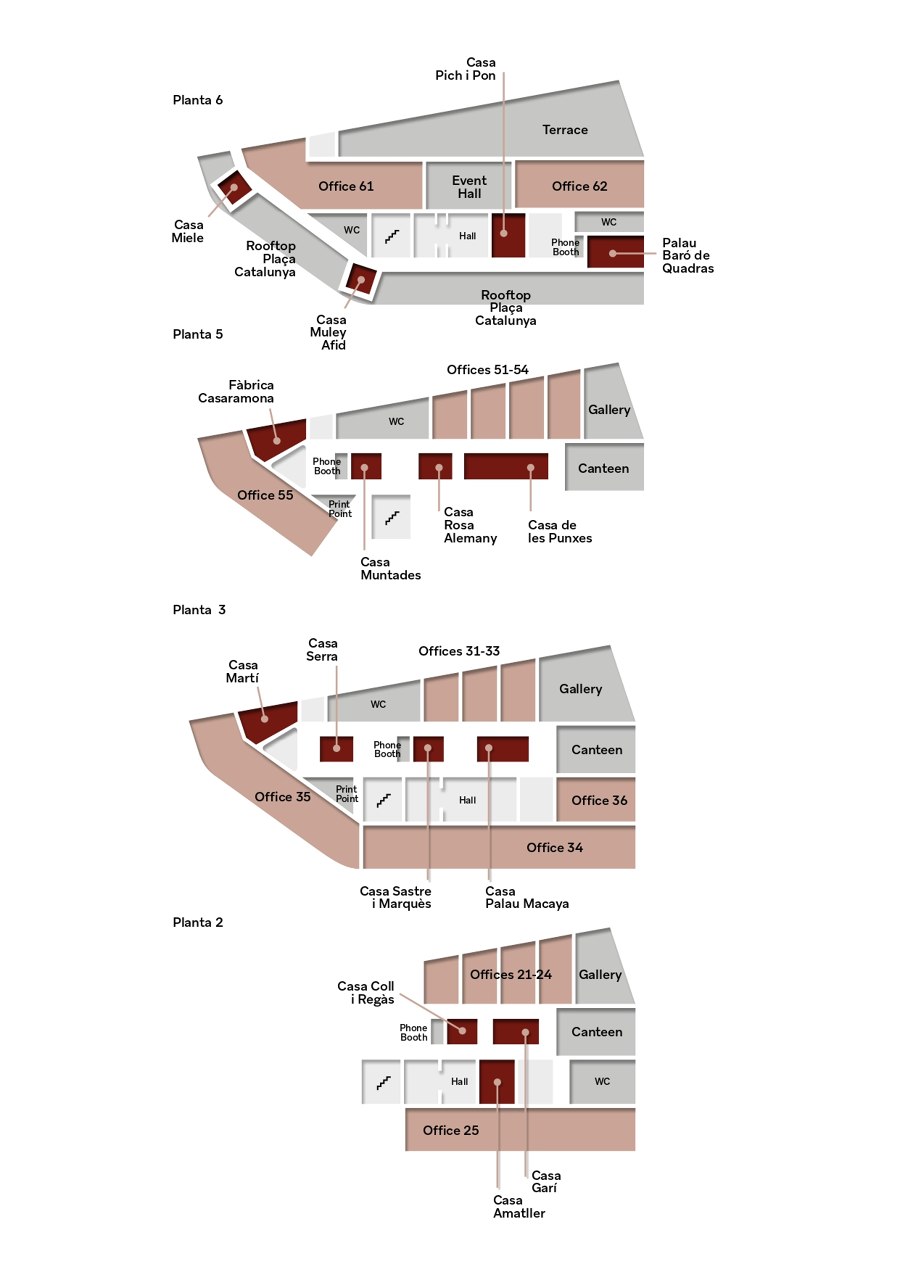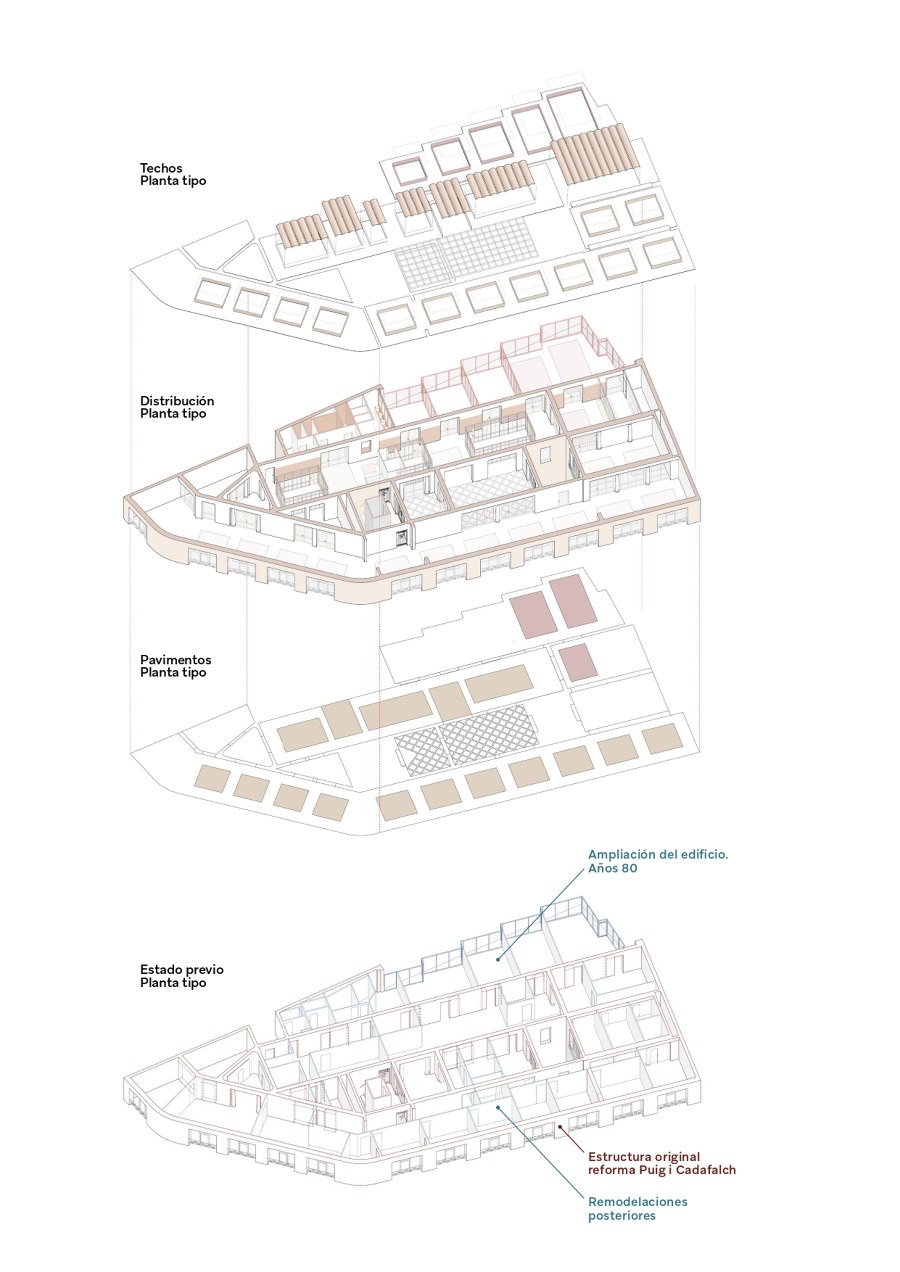Scob has renovated six of the eight floors of this building located in the center of Barcelona, including the terraces from which magnificent views can be admired.
Scob's strategy for this reform starts with the desire to recover the large open spaces, historically conceived as flexible areas, and enhance those values of Loom that align with the cultural movement of the Novecentismo. The creation of collective knowledge by sharing ideas in open and healthy spaces, direct contact with natural light and the outdoors, the use of noble materials worked with craft techniques, and comfortable interior environments in which elegance and simplicity predominate, are some of the features that connect the project with the intellectual current of the second decade of the 20th century.
Scob reads and reinterprets some of the aesthetic resources of the time, such as geometric drawings in coffered ceilings and pavements, to use them as a resource in the reorganization of spaces, and the enhancement of the heritage facade of Plaza Catalunya.
This same strategy is used to make the most of the available free heights, as well as to rediscover the original structures and materials through new "interior windows" practiced on ceilings and walls.
From a programmatic point of view, workspaces are distributed along the facades, to take advantage of the visual and natural light, while collaborative spaces are located in the heart of the floor. The proposal takes advantage of the central area farthest from the perimeter built where people cross the space intuitively, to establish shared work points and reinforce that natural interaction.
In its original state, the floors were occupied by the offices of different companies owned by businessman Joan Pich i Pon. Subsequently, and until the current remodeling of the space, it has been used by numerous headquarters of various companies and entities.
Special emphasis has been placed on restoring the columns, patio carpentry, and access doors, as they were the only original elements left from the intervention of Puig i Cadafalch.
In the case of pavements, the installation is completely new and is inspired by the Novecentismo aesthetic, both in composition, colors, textures, and materials.
The lobby ceilings of the sixth floor and some of the carpentry on this floor are not original but a more or less faithful reproduction that was made in the 80s during a restoration of the facade and the building expansion. Scob has respected that part and restored it.
For this project, most of the work was done with materials and specialized workshops at the local and state level: carpenters, plasterers, marble workers, upholsterers, textiles, ceramists, graphic artists, illustrators, furniture manufacturers...
Scob has incorporated the collaboration of illustrator Mister Andreu in the action proposal, an expert in portraying the architectural heritage of the City of Barcelona. For Loom Plaza Catalunya, a new collection of illustrations has been commissioned that includes some of Puig i Cadafalch's most emblematic works in the Catalan capital. These full-color sheets, testimonies of the heritage richness, can be seen in the common spaces of the new offices. For its part, the graphics and signage of the spaces take as a starting point the use of the Aloma typography, inspired by the homonymous novel by Marcé Rodoreda (1938) and the classical canons of the Novecentismo.
The visual harmony is reinforced through the combination of natural wood and white, sienna, and wine tones, which provide well-being and serenity, and enhance the natural light that extends throughout the floor. In some points, such as walls or upholstery, a more vibrant accent has been used using colorful motifs. Bathrooms and kitchens have been covered with earthy-toned ceramics. The use of this small-format ceramic, typically domestic, helps to reinforce the comfortable feeling of a home.
For its part, the furniture in the common areas coordinate perfectly with the noble materials of the space; wood, cork, rope, leather, ... The fabrics, as well as some vintage furniture pieces in some spaces, provide the counterpoint transporting us to the historical past of the building. As for workspaces, the sobriety and simplicity of the furniture are combined with large white voile curtains, which provide us with that domestic warmth by diluting the border between workspaces and cultural leisure and rest areas.
The terraces are one of the most imposing elements of this project, not only for the spectacular views they offer of the center of the city but also for their own style. The furniture and vegetation are inspired by the typically Barcelona galleries and terraces and combine different options to install, providing areas for rest and work and outdoor meeting.
Design Team:
Lead Architects: Oscar Blasco Lázaro, SCOB, Sergi Carulla Altadill
